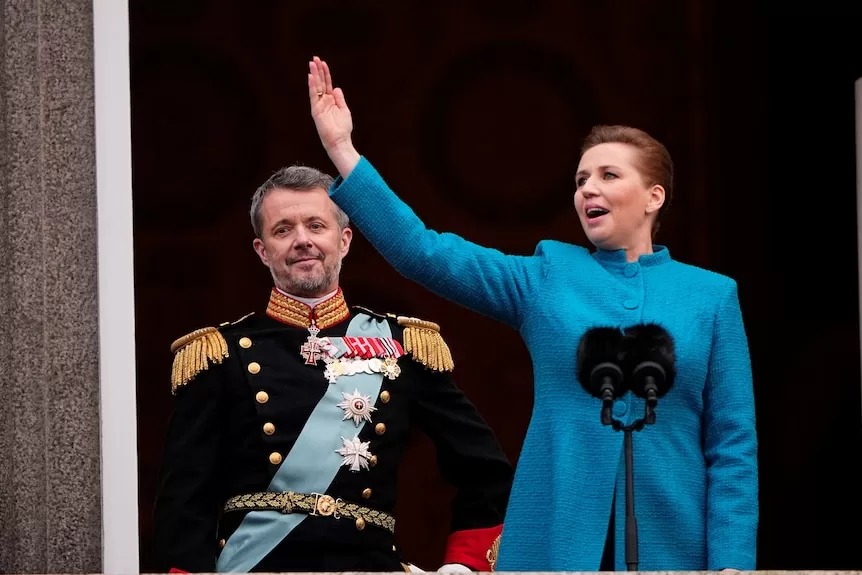Prince Frederik X and Australian-born Princess Mary have been proclaimed King and Queen of Denmark on the balcony of Christiansborg Palace in Copenhagen.
Key points:
- Tasmanian law graduate Mary Elizabeth Donaldson is the new Queen of Denmark
- Her husband Frederik was declared King in a proclamation ceremony in Copenhagen
- The ascension was triggered by the surprise abdication of Queen Margrethe II
Danish Prime Minister Mette Frederiksen declared their ascension to the throne before thousands of people on Sunday afternoon (local time).
It comes two weeks after Queen Margrethe II, who in the past had said she would remain on the throne for life, stunned the country on New Year’s Eve when she announced her decision to abdicate after 52 years of service.
Although she did not give an exact reason for her decision to step down, she said that a major back surgery she underwent last February had made her think about her future.
On Sunday, Ms Frederiksen read the proclamation three times, which is the tradition, as Frederik stood beside her wearing a ceremonial military uniform adorned with medals.
He was then joined on the balcony by Queen Mary and the couple’s four children, as the crowd spontaneously sang the national anthem.
“My hope is to become a unifying king of tomorrow,” King Frederik said in his speech.
“It is a task I have approached all my life.
“I want to return the trust I meet. I need trust from my beloved wife, you and that which is greater than us.”
He then kissed the new Queen, and another great cheer rose from the crowd.
Frederik married Tasmanian law graduate and real estate agent Mary Elizabeth Donaldson in 2004 after a chance encounter at a Sydney pub four years earlier.
An hour before the proclamation, Queen Margrethe, who is Denmark’s longest reigning monarch, formally stepped down from the throne.
The 83-year-old queen signed the official declaration of her abdication at the Christiansborg Palace.
It took place during a meeting of the Council of State, which was attended by government representatives, Frederik and Mary, as well as the couple’s oldest son Christian, 18, who is the new heir to the throne.
This is an historic moment for the nation of nearly 6 million people, with Margrethe the first Danish monarch in nearly 900 years to voluntarily relinquish the throne.
But unlike the lavish ceremonies held for the English monarchy, there were no formal coronations or anointments.
After signing her abdication papers, Margrethe rose and gestured to Frederik to take her place. “God save the king,” she said as she left the room.
On Sunday morning (local time), thousands of people from all over Denmark began gathering outside Christiansborg Palace, which houses parliament and government offices.
Copenhagen’s main shopping street, the Pedestrian Stroeget, was decorated with the red and white Danish flags, while several shops hung photos of the Queen and king-to-be.
Australian flags were also seen outside the palace.
In the afternoon, Queen Margrethe was escorted by guards in a gold carriage from Amelienborg Castle to Christiansborg to sign her abdication papers.
“We have come here today because this is history being made in front of our eyes. We just had to be here,” Soren Kristian Bisgaard, a 30-year-old pilot, said.
He was drinking champagne with three friends, sitting in camping chairs in front of Christiansborg.
“I’m very fond of the royal family. I have been in the Royal Life Guards myself, standing guard at the royal palace. I’m very proud to have done that and also to be here today,” he said.
The new king and queen take the throne at a time of huge public support and enthusiasm for the monarchy.
The most recent survey done after Margrethe announced she would abdicate indicated that 82 per cent of Danes expect Frederik to do well or very well in his new role, while 86 per cent said the same about Mary.
